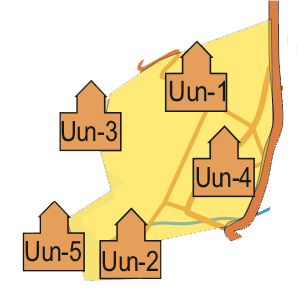Stepanakert
Stepanakert is the capital of the Artsakh Republic. It is industrial, cultural and educational center of Artsakh. The city situated at the foot of the eastern slope of the Karabakh ridge, in the valley of the Karkar river. The area of Stepanakert is 25.6 square kilometers; the climate of Stepanakert is subtropical semi-dry. The summers are relatively warm, and winters are mild and dry, but quite harsh frosts are seldom possible.
In 1924, the city was named Stepanakert in honor of Stepan Shahumyan. The city’s first urban plan was developed by architect Alexander Tamanyan in 1926.
The city has an ancient history - the first settlements on the site date from 3-2 millennium B.C. During archaeological excavations led by Emil Rosler in the 19th century, numerous valuable exhibits were found, some of which are in the greatest museums of the world. In the 5th century, A.D. on the site of the nowadays capital of Artsakh was the settlement of Vararakn (in Armenian, high-flowing spring), named after the large spring beating in the settlement.
Only one inn has survived to this day.
The city and its surroundings are rich in historical, architectural, and archaeological monuments.
| Stepanakert city | Cathedral of the Holy Mother of God (2019) | Operating |
| St. Jacob church (2007) | ||
| Holy All-Savior church (XIX) | Ruined, half-destroyed, destroyed | |
| Church in the settlement of «Karmir Avetaran» (XII-XIII) |




